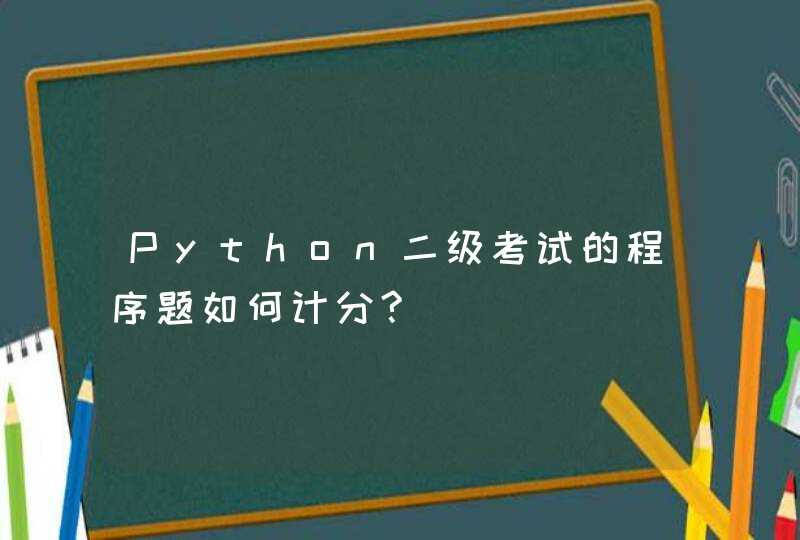
using namespace std
//================================================================
//辅助类,用来重载第二层[]操作符
class Matrixrow
{
friend class Cmatrix//定义友元类
public:
//构造函数
Matrixrow()
{
row=0
col=0
p=new int[row*col*sizeof(int)]//为指针所指向的数组分配内存
}
//构造函数
Matrixrow(int r,int c):row(r),col(c)
{
p=new int[r*c*sizeof(int)]//分配内存
}
//析构函数
~Matrixrow()
{
delete p//释放内存
}
//重载第二层[]操作符
int &operator[](int c)
{
return p[currentrow*col+c]//返回由第二层[]根据当前行取得的值作为[][]取得的值
}
private:
int *p//指针
int row//行
int col//列
int currentrow//当前行
}
//================================================================
//矩阵运算类
class Cmatrix
{
private:
int **matrix //二维指针指向存矩阵元素的区域
int height //矩阵的行数
int width //矩阵的列数
Matrixrow mr//声明一个mr对象,以传入第一层[]获取的值作为其当前行,然后进行第二层[]元素确定
public:
//构造函数
Cmatrix()
{
height=0
width=0
size()//分配内存
for (int i=0i<heighti++)
{
for (int j=0j<widthj++)
{
matrix[i][j]=0
}
}
}
//构造函数
Cmatrix(int h,int w): mr(h, w)
{
height=h
width=w
size()//分配内存
}
//拷贝构造函数
Cmatrix::Cmatrix(const Cmatrix &m1):height(m1.height),width(m1.width)
{
size()
for(int i=0i<m1.heighti++)
{
for (int j=0j<m1.widthj++)
{
matrix[i][j]=m1.matrix[i][j]
}
}
}
//分配内存的函数
void size()
{
//为动态二维数组分配内存
matrix=new int * [height]
for(int i = 0i <heighti++)
{
matrix[i] = new int[width]
}
}
//初始化函数,用来输入矩阵元素
void Initialize()
{
cout<<"请输入矩阵的 "<<height<<"(行)*"<<width<<"(列) 个元素:"<<endl
//输入元素
for (int i=0i<heighti++)
{
for (int j=0j<widthj++)
{
cin>>matrix[i][j]
}
}
//将输入的矩阵元素值传入mr对象
for (int i=0i<heighti++)
{
for (int j=0j<widthj++)
{
*(mr.p+i*width+j)=matrix[i][j]
}
}
}
//显示矩阵的函数
void display()
{
cout<<endl<<"得到的矩阵是:"<<endl<<endl
for (int i=0i<heighti++)
{
for (int j=0j<widthj++)
{
cout<<matrix[i][j]<<" "
}
cout<<endl
}
cout<<endl
}
//析构函数
virtual ~Cmatrix()
{
{
for (int i=0i<heighti++)
{
if(matrix!=NULL)
{
delete[] matrix[i]//释放为存储矩阵元素而分配的内存
}
}
}
}
//重载+操作符
friend const Cmatrix operator +(Cmatrix m1,const Cmatrix &m2)
{
//检验相加的条件
if ((m1.width==m2.width)&&(m1.height==m2.height))
{
cout<<"两个矩阵可以相加!"<<endl
//完成矩阵相加
for(int i=0i<m2.heighti++)
{
for(int j=0j<m2.widthj++)
m1.matrix[i][j]+=m2.matrix[i][j]
}
}
else
{
cout<<"两个矩阵不能相加!"<<endl
}
return m1
}
//重载-操作符
friend const Cmatrix operator -(Cmatrix m1,const Cmatrix &m2)
{
//检验相减的条件
if ((m1.width==m2.width)&&(m1.height==m2.height))
{
cout<<"两个矩阵可以相减!"<<endl
//完成矩阵相减
for(int i=0i<m2.heighti++)
{
for(int j=0j<m2.widthj++)
m1.matrix[i][j]-=m2.matrix[i][j]
}
}
else
{
cout<<"两个矩阵不能相减!"<<endl
}
return m1
}
//重载*操作符
friend const Cmatrix operator *(const Cmatrix &m1,const Cmatrix &m2)
{
Cmatrix mul(m1.height,m2.width)//定义一个Cmatrix对象临时存储乘积
//元素全部初始化为零
for(int m=0m<mul.heightm++)
{
for (int n=0n<mul.widthn++)
{
mul.matrix[m][n]=0
}
}
//检验相乘的条件
if (m1.width==m2.height)
{
cout<<"两个矩阵可以相乘!"<<endl
//完成矩阵元素相乘
for(int y=0y<m1.heighty++)
{
for (int x=0x<m2.widthx++)
{
for (int i=0i<m1.widthi++)
{
mul.matrix[y][x]+=m1.matrix[y][i]*m2.matrix[i][x]
}
}
}
}
else
cout<<"两个矩阵不能相乘!"<<endl
return mul//返回乘积
}
//重载=操作符
const Cmatrix&Cmatrix::operator=(const Cmatrix &m)
{
if(matrix!=NULL)
delete[] matrix
height = m.height
width = m.width
size()
for(int i=0i<m.heighti++)
{
for (int j=0j<m.widthj++)
{
matrix[i][j]=m.matrix[i][j]
}
}
return *this
}
//重载第一层[]操作符
Matrixrow &operator[](int row)
{
mr.currentrow = row//获取第一层[]取得的值作为当前行
return mr//返回
}
}
//================================================================
int main()
{
//矩阵相乘=========================================
Cmatrix c1(2,3)//2行3列的矩阵
c1.Initialize()
c1.display()
cout<<"第一行第二列是: "<<c1[0][1]<<endl
Cmatrix c2(3,2)//3行2列的矩阵
c2.Initialize()
c2.display()
Cmatrix c3
c3=c1*c2//矩阵相乘
c3.display()
//矩阵相加==========================================
Cmatrix c4(2,2),c5(2,2),c6
c4.Initialize()
c4.display()
c5.Initialize()
c5.display()
c6=c4+c5
c6.display()
//矩阵相减=========================================
c4.Initialize()
c4.display()
c5.Initialize()
c5.display()
c6=c4-c5
c6.display()
return 0
}
交:C={2,3,4,5} 就是既属于A的又属于B的那部分并:C = {2,3,4,5,6,7,8,11,25} 两个集合的整合去掉重复的。A+B-AB(AB:公共部分)
差:C= {6,7,8}就是属于A但是不属于B的那部分
笛卡尔乘积:这个得出的集合就多了:举个例子。。假设集合A={a,b},集合B={c,d}则两个集合的笛卡尔积为{(a,c),(a,d),(b,c),(b,d)}
/*链表实现集合运算*/#include<iostream.h>
typedef int ElemType
struct SNode {
ElemType data
SNode* next
}
void InitSet(SNode*&HT)
{
HT=NULL
}
void ClearSet(SNode*&HT)
{
SNode *p=HT, *q
while(p!=NULL)
{
q=p->next
delete p
p=q
}
HT=NULL
}
int LenthSet(SNode* HT)
{
int n=0
while(HT!=NULL)
{
n++
HT=HT->next
}
return n
}
bool EmptySet(SNode* HT)
{
return HT==NULL
}
bool Inset(SNode* HT, ElemType item)
{
while(HT!=NULL)
{
if(HT->data==item) return true
else HT=HT->next
}
return false
}
void OutputSet(SNode* HT)
{
while(HT!=NULL)
{
cout<<HT->data<<' '
HT=HT->next
}
cout<<endl
}
bool FindSet(SNode* HT, ElemType&item)
{
while(HT!=NULL)
{
if(HT->data==item) break
else HT=HT->next
}
if(HT!=NULL)
{
item=HT->data
return true
}
else return false
}
bool ModifySet(SNode* HT, ElemType item, ElemType temp)
{
while(HT!=NULL)
{
if(HT->data==item) break
else HT=HT->next
}
if(HT!=NULL)
{
HT->data=temp
return true
}
else return false
}
bool InsertSet(SNode*&HT, ElemType item)
{
//建立值为item的新结点
SNode* newptr= new SNode
newptr->data=item
//从单链表中顺序查找是否存在值为item的结点
SNode* p=HT
while(p!=NULL)
{
if(p->data==item) break
else p=p->next
}
// 若不存在则把新结点插入到表头并返回真,否则不返回假
if(p==NULL)
{
newptr->next=HT
HT=newptr
return true
}
else return false
}
bool DeleteSet(SNode*&HT, ElemType&item)
{
//从单链表中顺序查找是否存在值为item的结点
SNode *cp=HT, *ap=NULL
while(cp!=NULL)
{
if(cp->data==item) break
else
{
ap=cp
cp=cp->next
}
}
//若不存在则不返回假,表明删除失败
if(cp==NULL)
return false
//由item带回待删除结点cp的完整值,若不需要带回可设置item为值参
item=cp->data
if(ap==NULL) HT=cp->next
//从单链表中删除已经找到的cp结点并对ap是否为表头做不同处理
else ap->next = cp->next
//删除cp结点后返回真
delete cp
return true
}
//求两集合的并集
void UnionSet(SNode* HT1, SNode* HT2, SNode*&HT)
{
HT=NULL
//把HT1集合单链表元素复制到HT集合单链表中
SNode* p=HT1
while(p!=NULL)
{
//建立新结点并赋值为p->data
SNode* newptr=new SNode
newptr->data=p->data
//把新结点插入到HT集合单链表的表头并让P指向下一个结点
newptr->next=HT
HT=newptr
p=p->next
}
//把HT1集合单链表的每个元素插入到HT集合单链表中
p=HT2
while(p!=NULL)
{
InsertSet(HT, p->data)
p=p->next
}
}
//求集合的交集
void InterseSet(SNode* HT1, SNode* HT2, SNode*&HT)
{
HT=NULL
ElemType x
SNode* p=HT2
while(p!=NULL)
{
x=p->data
bool b=FindSet(HT1,x) //用x查找HT1集合
if(b) InsertSet(HT,x) //若查找成功则把x插入到HT集合中
p=p->next
}
if(HT==NULL)
cout<<"空集"<<endl
}
//求集合的差集
void DifferenceSet(SNode* HT1, SNode* HT2, SNode*&HT)
{
HT=NULL
ElemType x
SNode* p=HT1
while(p!=NULL)
{
x=p->data
bool b=FindSet(HT2,x) //用x查找HT2集合
if(b) InsertSet(HT,x) //若查找失败则把x插入到HT集合中
p=p->next
}
if(HT==NULL)
cout<<"空集"<<endl
}
int main()
{
SNode *a,*b,*c,*d
InitSet(a)
InitSet(b)
InitSet(c)
InitSet(d)
ElemType r[8] = {12,32,13,1,2,4,7,8}
ElemType r1[8] = {25,98,26,15,46,38,5,1}
ElemType r2[8] = {5,98,25,8,34,1,15,46}
int i
for(i=0i<8i++)
InsertSet(a,r[i])
for(i=0i<8i++)
InsertSet(b,r1[i])
for(i=0i<8i++)
InsertSet(c,r2[i])
ElemType x=1,y=25
DeleteSet(a,x)
DeleteSet(a,y)
cout<<"输出a集合的元素:"<<endl
OutputSet(a)
cout<<"---------------------------------------------------------"<<endl
if(ModifySet(a,13,30))
cout<<"把 a 集合的 13 更新为 30更新成功 !"<<endl
else
cout<<"集合 a 更新不成功 !"<<endl
if(EmptySet(a))
cout<<"集合 a 为空 !"<<endl
else
cout<<"集合 a 不为空 !"<<endl
cout<<"集合a的长度:"<<LenthSet(a)<<endl
cout<<"---------------------------------------------------------"<<endl
cout<<"输出b集合的元素:"<<endl
OutputSet(b)
cout<<endl
cout<<"输出c集合的元素:"<<endl
OutputSet(c)
cout<<endl
cout<<"b、c两个集合的并集是:"<<endl
UnionSet(b,c,d)
OutputSet(d)
cout<<endl
cout<<"b、c两个集合的交集是:"<<endl
InterseSet(b,c,d)
OutputSet(d)
cout<<endl
cout<<"b、c两个集合的差集(c-b)是:"<<endl
DifferenceSet(b,c,d)
OutputSet(d)
ClearSet(a)
ClearSet(b)
ClearSet(c)
ClearSet(d)
return 0
}













![r语言脚本前的[1]表示什么](/aiimages/r%E8%AF%AD%E8%A8%80%E8%84%9A%E6%9C%AC%E5%89%8D%E7%9A%84%5B1%5D%E8%A1%A8%E7%A4%BA%E4%BB%80%E4%B9%88.png)























































